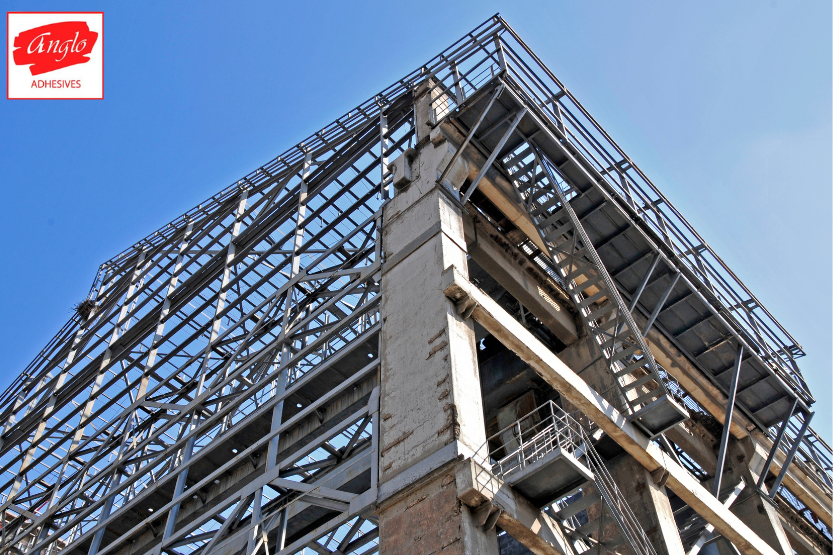Blog
Common Structural Bonding Challenges and How to Overcome Them

In the grand scheme of holding things together, from the delicate wings of a butterfly to the mighty beams of a skyscraper, structural bonding reigns supreme. It’s the invisible force that unites atoms and molecules, forming the very building blocks of our world. For adhesives, the unsung heroes of construction and everyday life, achieving this structural bonding presents a unique set of challenges. This article delves into the intricacies of structural bonding within adhesives, exploring the hurdles and unveiling strategies to conquer them. The success of structural bonding hinges significantly on selecting the right adhesive for the materials being joined.
At its core, structural bonding refers to the attractive forces that hold atoms together within a molecule and molecules together in a solid material. These forces can arise from the sharing of electrons (covalent bonding), the electrostatic attraction between oppositely charged ions (ionic bonding), or the “sea of electrons” model in metals (metallic bonding). Thus, understanding these fundamental interactions is crucial for selecting the right adhesive and optimising its performance.
The Foundation of Strong Structural Bonding: Bridging the Dissimilar Gap
Adhesives often need to create a strong bond between materials with vastly different surface properties. This can be the case when bonding dissimilar materials, like metal to plastic or wood to glass. Hence, selecting adhesives with the appropriate chemical characteristics to establish strong bonds with both adherends is essential.
Maintaining Flexibility with Strength
In some applications, the bonded joint requires a degree of flexibility along with structural strength. This is particularly important for components that experience vibration or movement. Moreover, selecting adhesives with the right balance of flexibility and rigidity ensures the joint can withstand stress without compromising its integrity. Fortunately, a variety of adhesive technologies cater to the need for both flexibility and strength. Here are some examples:
- Polyurethanes: These versatile adhesives come in a range of formulations, with some offering excellent flexibility while maintaining strong adhesion. They are commonly used in construction sealants and automotive applications.
- Silicone Adhesives: Silicones are renowned for their elasticity and weather resistance, thus, making them ideal for applications requiring flexibility and durability. In addition,they are widely used in construction sealants and for bonding dissimilar materials.
The Curse of Creep in Structural Bonding
Creep is the gradual deformation of a material when subjected to constant stress over time. Over time, some adhesives can exhibit creep, potentially leading to a weakening of the bond. Several factors can accelerate creep in adhesives:
- High Temperatures: Elevated temperatures increase the molecular mobility within the adhesive, as a result, making it more susceptible to deformation under stress.
- High Stress Levels: The greater the stress placed on the adhesive joint, the faster creep will occur. Therefore, selecting adhesives with the appropriate strength for the intended application is crucial.
- Exposure to Solvents or Chemicals: Certain chemicals can degrade the adhesive or alter its mechanical properties, accelerating creep. In addition, understanding the environmental conditions where the joint will be used is essential.
Selecting adhesives with high creep resistance or designing joints to minimise stress concentrations is crucial for long-term performance.
The Right Match For Your Materials
Another hurdle arises from the diverse nature of materials. Metals, plastics, and wood each possess distinct surface properties. Selecting an adhesive with the appropriate chemical compatibility for the specific materials is paramount. Furthermore, compatibility charts and manufacturer recommendations are valuable resources in this regard. Choosing the right adhesive ensures optimal interaction between the adhesive and the adherend at the molecular level, leading to a strong structural bond.
Environmental Influences on Structural Bonding
Understanding the interplay between the adhesive and the environment is also essential. Factors like temperature, humidity, and UV exposure can significantly impact bond strength and durability. Selecting adhesives formulated for the intended application environment is critical. Adhesives designed to withstand high temperatures in car engines or resist UV degradation in outdoor applications will ensure long-lasting structural bonding.
Long-Term Performance: Building to Last
The challenge doesn’t end with initial bonding. Over time, degradation processes can weaken the adhesive joint. Selecting adhesives with inherent resistance to these processes, such as oxidation or hydrolysis, is a proactive approach. Additionally, designing joints to minimise stress concentrations can further enhance long-term performance. By understanding how adhesives degrade and taking steps to mitigate these processes, we can ensure long-lasting structural bonds.
Advanced Technologies in Structural Bonding
For demanding applications, exploring advanced adhesion technologies can be beneficial. Techniques like surface modification, which alters the adherend surface to promote stronger bonding, offer improved performance. Additionally, incorporating nanomaterials into adhesives can enhance their mechanical properties and durability. These advancements in adhesion technology pave the way for even more robust and reliable structural bonding solutions.
Innovation at Work: Anglo-Adhesives Leading the Way
Achieving successful structural bonding with adhesives necessitates a multifaceted approach. By acknowledging the inherent challenges, meticulously preparing surfaces, selecting compatible materials, and employing appropriate application techniques, we can ensure strong and lasting bonds. Mastering the art of structural bonding involves not only technical expertise but also attention to detail and adherence to rigorous process controls.
Anglo Adhesives offers a wide range of adhesives formulated for diverse applications, each meticulously designed to ensure optimal compatibility with various materials and environmental conditions. Our commitment to research and development results in advanced bonding technologies that push the boundaries of strength, flexibility, and durability. By partnering with Anglo Adhesives, we can unlock the full potential of structural bonding, creating reliable and long-lasting solutions across countless industries.